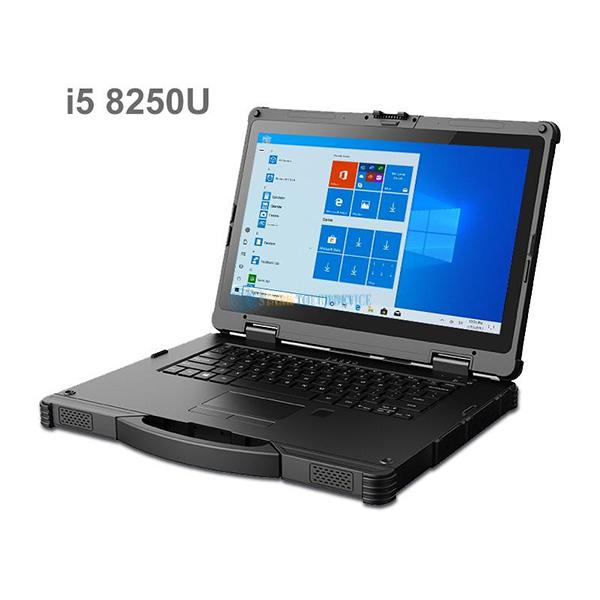Welcome STARK TOUCH DEVICE!
Solutions
Multi-account permission management Settings for industrial control computers
Emergency Shutdown Procedures for Industrial Control Computers
Industrial control systems demand immediate response protocols to prevent catastrophic failures. When critical parameters exceed safety thresholds, operators must execute emergency shutdown (ESD) sequences to isolate energy sources and stabilize equipment. The following sections detail standardized procedures aligned with international safety standards such as IEC 61508 and ISO 13849.

Layered Safety Architecture Implementation
Modern industrial control computers integrate multi-tiered safety mechanisms. The hardware safety layer employs physical emergency stop buttons (typically red mushroom-head design) wired directly to safety relays. These buttons must comply with EN 418:1992 specifications, featuring positive mechanical locking to prevent accidental reset. Simultaneously, the software safety layer in PLCs monitors critical process variables like temperature, pressure, and vibration through redundant sensors.
When an ESD trigger occurs, the safety PLC executes a dual-action protocol:
Immediate Power Disconnection: Safety relays interrupt power to motors, actuators, and high-energy components within 100ms.
Control System Isolation: PLC outputs are forced into safe states, preventing unintended commands from reaching field devices.
This architecture ensures compliance with SIL 2/3 safety integrity levels, where safety functions must override normal operation regardless of control system status.
Operator-Initiated Shutdown Protocols
Operators must follow standardized procedures when initiating ESD:
Activation: Press and hold the emergency stop button until audible/visual confirmation occurs. For systems with safety door interlocks, ensure all protective barriers are closed before reset.
System Verification: Check HMI displays for confirmation of:
Motor contactors in open position
Hydraulic/pneumatic valves in neutral state
Network communication links terminated
Lockout/Tagout: Apply physical locks to energy isolation points and affix warning tags per OSHA 1910.147 requirements.
In wind turbine applications, ESD triggers additional protocols:
Activation of mechanical brakes within 2 seconds
De-energization of pitch control systems
Grid disconnection via circuit breakers
Operators must document the incident in the system log, including timestamp, triggering parameter, and initial response actions.
Post-Shutdown Safety Procedures
After system stabilization, technicians must conduct methodical safety checks:
Energy Dissipation:
For hydraulic systems: Bleed pressure to 0 bar using manual relief valves
For electrical systems: Verify capacitor discharge and battery isolation
For thermal systems: Confirm cooling water circulation or forced ventilation
Root Cause Analysis:
Retrieve alarm history from PLC non-volatile memory
Analyze trend data from safety instrumented systems (SIS)
Cross-reference with maintenance logs for recurring issues
Controlled Restart:
Perform loop checks on all safety-critical instruments
Execute partial system tests before full re-energization
Validate interlock functionality through simulated fault injection
In chemical processing plants, additional steps include:
Neutralization of reactive chemicals in process vessels
Purge of flammable vapors from enclosed spaces
Verification of explosion-proof equipment integrity
Failure Mode Analysis and Continuous Improvement
Post-incident reviews must address:
Human Factors:
Evaluate operator response times against training benchmarks
Assess HMI alarm prioritization effectiveness
Review physical ergonomics of emergency controls
System Redundancy:
Verify backup power supply activation times
Test communication path diversity for safety messages
Analyze single points of failure in safety chains
Documentation Updates:
Revise operating procedures to incorporate lessons learned
Update safety instrumented function (SIF) parameters
Train personnel on modified emergency sequences
A case study from automotive manufacturing revealed that adding visual indicators to emergency stop stations reduced accidental activations by 37% while improving response times during genuine emergencies.
Technical Considerations for Safety-Critical Systems
Implementing effective ESD requires attention to:
Hardware Selection: Safety relays must meet IEC 60947-5-1 requirements for category 0 (immediate power cut) or category 1 (controlled stop) operations
Software Validation: PLC logic should undergo IEC 61131-3 compliance testing, with safety functions verified through fault tree analysis
Network Security: Ensure safety protocols operate on isolated networks to prevent cyber-physical attacks from disabling ESD functions
For systems handling hazardous materials, additional layers include:
Automated fire suppression activation
Toxic gas release containment procedures
Emergency ventilation system prioritization
These procedures form the backbone of industrial safety, where compliance with functional safety standards directly correlates with reduced workplace accidents and equipment damage. Regular drills and system audits maintain operational readiness while fostering a culture of safety awareness among personnel.


